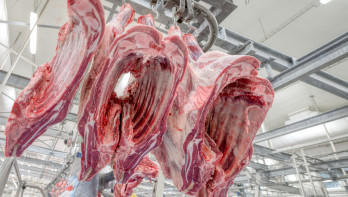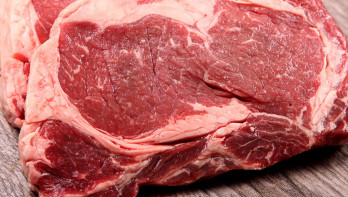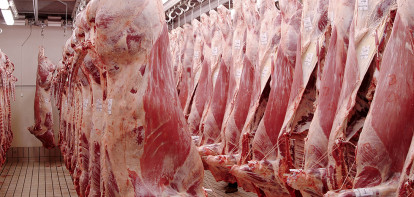News Cattle & Beef
Drought makes USA a beef transit country
Despite a record low in the American cattle herd due to drought, American beef exports remain steady. The drought affecting the United States is causing even more problems for countries to the south of America. As a result, the United States continues to sell beef to those markets while importing beef itself.
Despite the scarcity in the American beef market, exports are barely decreasing. A total of 111,580 tons of beef were exported, just slightly more than a year ago. One significant reason for the export not shrinking is that prices continue to rise. Although the export volume decreased by 3%, the value of exports in the first four months of 2024 increased by 5% from $3.21 billion to $3.38 billion.
Increased meat supply
The strong export can be partly explained by a large meat supply. Due to the drought, extra cattle were brought to slaughter this month. After the slaughter rate decreased in the first three months of the year, the number of slaughters increased in April, as reported by the data from the United States Department of Agriculture (USDA). In that month, the slaughter rate increased from just above 2.5 million slaughters to over 2.7 million. The high meat price also helps, as high prices make sales more attractive than freezing.
Additionally, what made freezing less attractive was the expectation that meat prices would drop in the summer. In February, futures contracts for August in the American cattle market were in the range of between 250 and 260 cents per pound. This translates to $5.51 to $5.73 per kilo. On April 10, the average value of the futures contracts dropped to 236.53 cents (about $5.21).
The market anticipated that the high meat prices would lead to a decrease in demand. It has since been shown that demand remained constant despite the high prices. As a result, the prices of the futures contracts have returned to the level of February.
Imports also growing
Remarkably, the United States not only continues to export but also imports a significant amount of beef. In the first quarter of 2024, the United States imported 170,000 tons of beef. Between 2019 and 2022, imports typically ranged around 130,000 tons. This marks a 23.5% increase. Prior to that, imports were generally below that amount.
The primary exports are to other countries in the North and Central American market. Countries to the south of the United States are even more affected by the drought than America. Therefore, these countries continue to import American beef. Reports in American media indicate that Mexico is currently experiencing severe drought conditions, with 90% of the country affected. As a result, significantly fewer cattle were slaughtered in the country in the first three months of the year, as reported by Mexican agricultural media. While the situation improved in April, the number of slaughters still decreased by 9% compared to the previous year. The situation is similar in Central American countries and the Caribbean. This dependence on imports makes these countries reliant on the United States as a hub.
Export to Mexico, in particular, has seen a significant increase. Compared to the previous year, exports to Mexico rose by 46% to 21,031 tons. The value of the exports increased by 47% to $120.8 million. The export figure has remained around 20,000 tons of beef throughout the year. Export to the Caribbean is also rising significantly, by 47%. Additionally, exports to Panama and Honduras increased by 20%.
On the other hand, exports to more distant destinations, especially Asian countries, are declining. Export to Korea decreased by 20% in April to just under 20,000 tons. The export to China and Hong Kong further decreased by 12% to about 18,600 tons. Japan is an interesting exception, with exports to the country increasing by 6% to over 21,000 tons, while the value increased by 11% to $162.9 million.
Australia and New Zealand benefit
Recently, Foodbusiness reported that Australia is a major winner of the drought in the United States. In April, exports to the United States from Australia increased by 127% to 27,250 tons. Besides Australia, New Zealand is now also benefiting from the scarcity in the American market. Interestingly, the United States has surpassed China as the largest export market for New Zealand beef. The value of the exports increased by 19% to $261 million.




